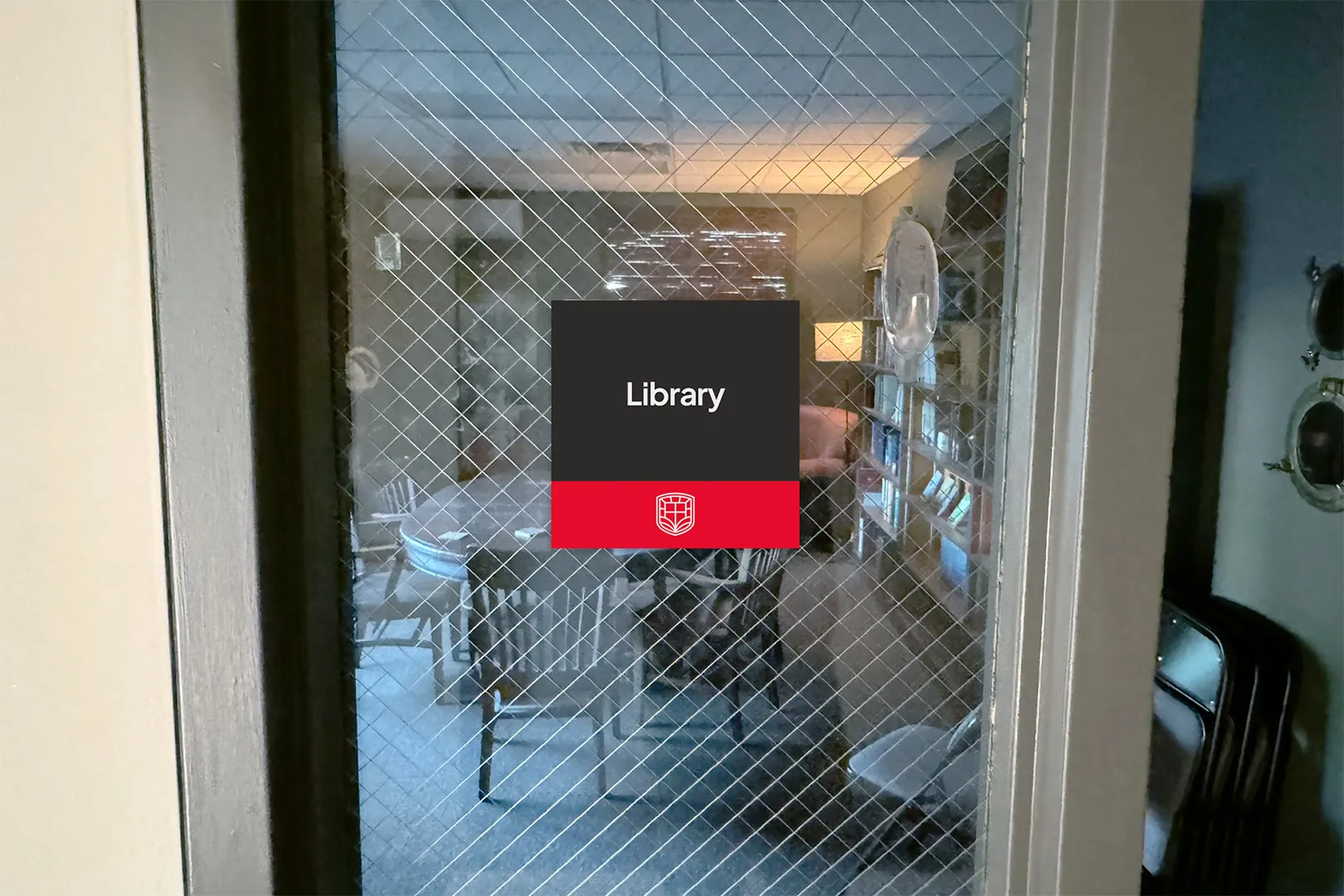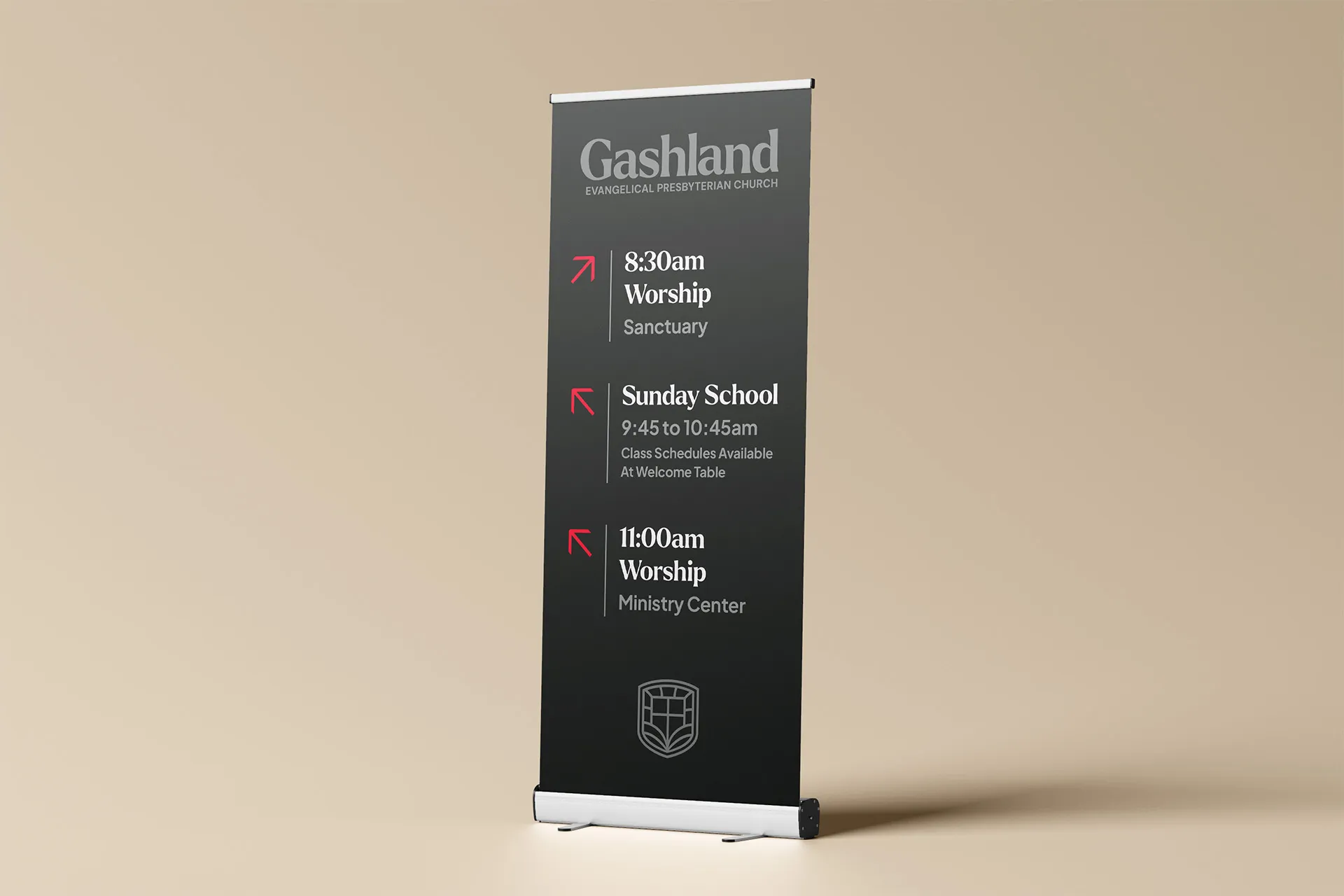Church Way-Finding Signs: Using Typography


For way-finding signage, there are three critical things to get right with typography: Size, Style, and Grouping.
To figure out how big the font size should be on your signs, think about the furthest possible viewing distance for that sign. Will visitors be seeing it up close every time, or is it at the end of a hallway?
A general rule of thumb is that the main headings on the sign should be legible from 40ft away for someone with good eyesight.
This applies mostly to directional signage, and isn’t necessary for things like room labels.

Now on to font style. Legibility is absolutely critical for way-finding, so you want to choose a brand-aligned font that is easy to read. For the thickness or weight of the text, lean bolder rather than lighter.
In this example, we’re using Larken, the main brand typeface, for the headings. The secondary typeface, Plus Jakarta Sans, was better suited for the other information and is more legible at small sizes.

Finally, consider the grouping of information and arrows in your layout. You want to make sure that you have grouped relevant information together in a way that will quickly make sense to someone who is late for Sunday School!